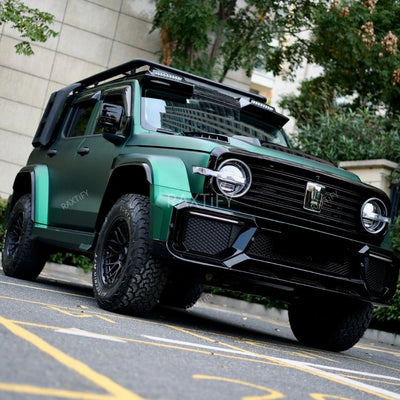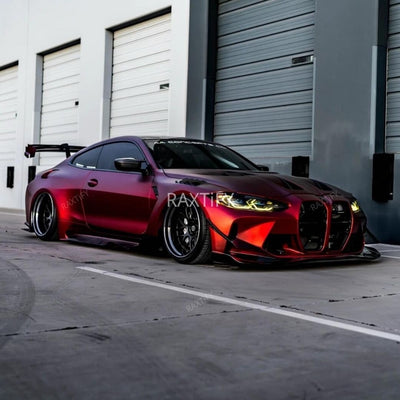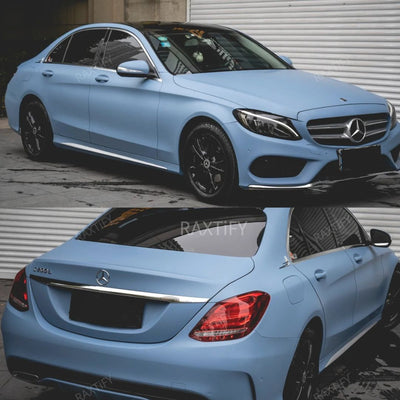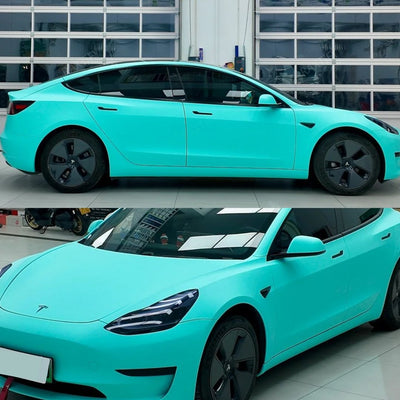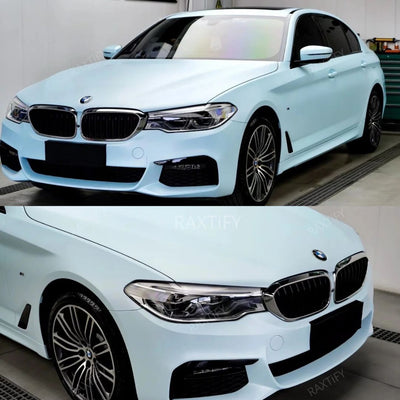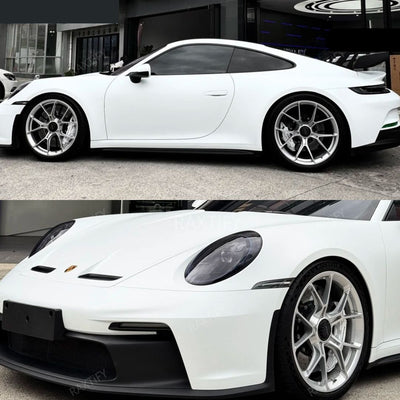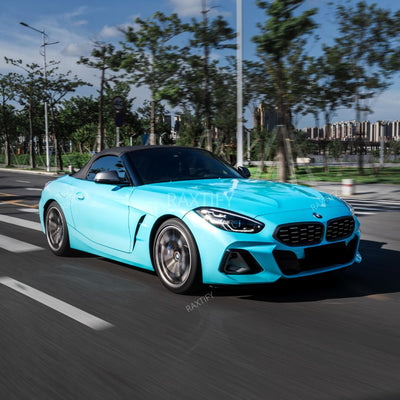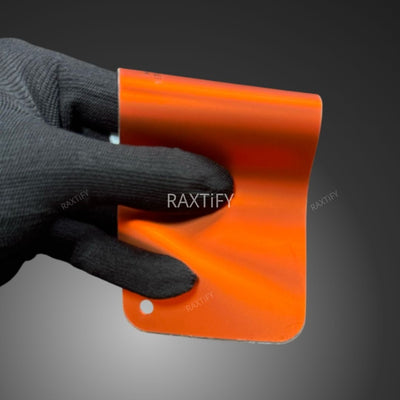
Understanding car window tint laws is essential for ensuring compliance with state regulations. Each state has its own laws regarding permissible tint percentages, commonly referred to as Visible Light Transmission (VLT) percent. These laws dictate the amount of light allowed into the vehicle through tinted windows.
When considering tint percentages, it's crucial to keep in mind that these regulations also apply to windshield tinting. Depending on the state, there are specific guidelines regarding the portion of the windshield that can be tinted or the allowable tint percentage for the entire windshield.
Below is a comprehensive breakdown of car window tint laws by state.
Window Tint Laws by State
| State | Front Side Windows | Back Side Windows | Rear Windows | Windshield | Reflectivity | Other Restrictions |
|---|
|
|
||||||
|---|---|---|---|---|---|---|
| Alabama | 32% | 32% | 32% | 6 inches | no more than 20% reflective | none |
| Alaska | 70% | 40% | 40% | 5 inches | no metallic or mirrored tinting | no red, yellow or amber tinting allowed |
| Arizona | 33% | any | any | tinting allowed to top of the manufacturer's as-1 line | no more than 35% reflective | red and amber not permitted. back window tinting requires the use of dual side mirrors |
| Arkansas | 25% | 25% | 10% | 5 inches | no metallic or mirrored tinting | none |
| California | 70% | any | any | 4 inches | no more reflective than a standard window | red, amber, and blue not allowed, dual side mirrors required for back tinted windows |
| Colorado | 27% | 27% | 27% | 4 inches | no metallic or mirrored tinting | red and amber not permitted, back window tinting requires the use of dual side mirros |
| Connecticut | 35% | 35% | any | non-reflective tint above the as-1 line | no more than 21% reflective | dual side mirrors required for back tinted windows |
| Delaware | 70% | any | any | non-reflective tint above the as-1 line | no metallic or mirrored tinting | dual side mirrors required for back tinted windows |
| Florida | 28% | 15% | 15% | non-reflective tint allowed above the as-1 line | no more than 25% reflective | dual side mirrors required for back tinted windows |
| Georgia | 32% | 32% | 32% | 6 inches | no more than 20% reflective | red and amber not allowed |
| Hawaii | 35% | 35% | 35% | no inch requirent, must allow 70% of light | no metallic or mirrored tinting | dual side mirrors required for back tinted windows |
| Idaho | 35% | 20% | 35% | tinting allowed to the top of the manufacturer’s as-1 line | no more than 35% reflective | dual side mirrors required for back tinted windows |
| Illinois | 35% | 35% | 35% | 6 inches | must be non-reflective | dual side mirrors required for back tinted windows |
| Indiana | 30% | 30% | 30% | tinting allowed to the top of the manufacturer’s as-1 line | no more than 25% reflective | none |
| Iowa | 70% | any | any | tinting allowed to the top of the manufacturer’s as-1 line | no excessive reflections allowed, but not specified | none |
| Kansas | 35% | 35% | 35% | tinting allowed to the top of the manufacturer’s as-1 line | no metallic or mirrored tinting | red, amber and yellow are prohibited and must have dual side mirrors for back tinted windows |
| Kentucky | 35% | 18% | 18% | tinting allowed to the top of the manufacturer’s as-1 line | no more than 25% reflective | none |
| Louisiana | 40% | 25% | 12% | tinting allowed to the top of the manufacturer’s as-1 line | no more than 20% reflective | none |
| Maine | 35% | any | any | 4 inches | must be non-reflective | dual side mirrors required for back tinted windows |
| Maryland | 35% | 35% | 35% | 5 inches | no law | red, amber and yellow are prohibited and must have dual side mirrors for back tinted windows |
| Massachusetts | 35% | 35% | 35% | 6 inches | no more than 35% reflective | must have dual side mirrors required for back tinted windows |
| Michigan | any percent, but only 4 inches from the top of window | any | any | 4 inches | no more than 35% reflective | none |
| Minnesota | 50% | 50% | 50% | none allowed | no more than 20% reflective | none |
| Mississippi | 28% | 28% | 28% | tinting allowed to the top of the manufacturer’s as-1 line | no more than 20% reflective | none |
| Missouri | 35% | any | any | tinting allowed to the top of the manufacturer’s as-1 line | no more than 35% reflective | must have dual side mirrors for back tinted windows |
| Montana | 24% | 14% | 14% | tinting allowed to the top of the manufacturer’s as-1 line | no more than 35% reflective | none |
| Nebraska | 35% | 20% | 20% | 5 inches or as-1 line, whichever comes first | no more than 35% reflective | unclear on side mirrors, but red, amber and yellow are not permitted |
| Nevada | 35% | any | any | tinting allowed to the top of the manufacturer’s as-1 line | no law | tinting allowed to the top of the manufacturer’s as-1 line |
| New Hampshire | no tinting allowed | 35% | 35% | 6 inches | no metallic or mirrored tinting | dual side mirrors required for back tinted windows |
| New Jersey | no tinting allowed | any | any | no tinting allowed | no metallic or mirrored tinting | dual side mirrors required for back tinted windows |
| New Mexico | 20% | 20% | 20% | 5 inches or as-1 line, whichever comes first | no law | dual side mirrors required for back tinted windows |
| New York | 70% | 70% | any | 6 inches | no metallic or mirrored tinting | dual side mirrors required for back tinted windows |
| North Carolina | 35% | 35% | 35% | tinting allowed to the top of the manufacturer’s as-1 line | no more than 20% reflective | red, amber and yellow are prohibited and must have dual side mirrors for back tinted windows |
| North Dakota | 50% | any | any | no more than 70% | no metallic or mirrored tinting | dual side mirrors required for back tinted windows |
| Ohio | 50% | any | any | no more than 70% | no more reflective than a standard window | none |
| Oklahoma | 25% | 25% | 25% | 5 inches or as-1 line, whichever comes first | no more than 20% reflective | dual side mirrors required for back tinted windows |
| Oregon | 35% | 35% | 35% | 6 inches | no more than 13% reflective | red, green, yellow, black and amber tints are not allowed, and must have dual side mirrors for back tinted windows |
| Pennsylvania | 70% | 70% | 70% | none allowed | no metallic or mirrored tinting | dual side mirrors required for back tinted windows |
| Rhode Island | 70% | 70% | 70% | tinting allowed to the top of the manufacturer’s as-1 line | no law | none |
| South Carolina | 27% | 27% | 27% | tinting allowed to the top of the manufacturer’s as-1 line | must be non-reflective | red, amber and yellow are prohibited and must have dual side mirrors for back tinted windows |
| South Dakota | 35% | 20% | 20% | tinting allowed to the top of the manufacturer’s as-1 line | no metallic or mirrored tinting | none |
| Tennessee | 35% | 35% | 35% | tinting allowed to the top of the manufacturer’s as-1 line | no metallic or mirrored tinting | none |
| Texas | 25% | 25% | any | 5 inches or as-1 line, whichever comes first | no more than 25% reflective | red, amber, and blue not allowed. dual side mirrors required for back tinted windows |
| Utah | 43% | any | any | tinting allowed to the top of the manufacturer’s as-1 line | no metallic or mirrored tinting | dual side mirrors required for back tinted windows |
| Vermont | no tinting allowed | any | any | tinting allowed to the top of the manufacturer’s as-1 line | no metallic or mirrored tinting | dual side mirrors required for back tinted windows |
| Virginia | 50% | 35% | 35% | tinting allowed to the top of the manufacturer’s as-1 line | no more than 20% reflective | red, amber and yellow are prohibited and must have dual side mirrors for back tinted windows |
| Washington | 24% | 24% | 24% | 6 inches | no more than 35% reflective | red, green, yellow, black and amber tints are not allowed, and must have dual side mirrors for back tinted windows |
| Washington D.C. | 70% | 50 percent for cars, 35 percent for multi-purpose vehicles | 50 percent for cars, 35 percent for multi-purpose vehicles | 5 inches or as-1 line, whichever comes first | no law | none |
| West Virginia | 35% | 35% | 35% | 5 inches | 20% reflective | red, amber and yellow are prohibited and must have dual side mirrors for back tinted windows |
| Wisconsin | 50% | 35% | 35% | tinting allowed to the top of the manufacturer’s as-1 line | no law | dual side mirrors required for back tinted windows |
| Wyoming | 28% | 28% | 28% | 5 inches or as-1 line, whichever comes first | no more than 20% reflective | dual side mirrors required for back tinted windows |
It's important to note that while we strive for accuracy, completeness, and currency, the information provided may not be warranted or guaranteed. We are not legal professionals and do not offer legal advice. For legal guidance on window tinting laws, we recommend consulting with a qualified attorney or legal expert.
By referring to this chart, you can determine the appropriate shade of tint that aligns with your state's regulations and meets your preferences.
FAQ
Q: Is window tinting legal?
A: Yes, window tinting is legal in most states, provided it complies with the permitted visible light transmittance.
Q: What is the darkest legal tint?
A: The allowable darkness of window tint varies by state. Each state has its own regulations governing the darkness permitted on different windows of a vehicle.
Q: How do I make my tint look darker?
A: To achieve a darker tint appearance, the best method is to replace the existing window tint with a darker shade. While layering tint over tint is possible, it's generally not recommended and may void the tint warranty.
Q: Is limo window tint illegal?
A: Limo tint, typically referring to 5% tint, which blocks out 95% of light, may be legal or illegal depending on the state regulations and the windows to which it is applied. Refer to the state-specific regulations to determine the legality of limo tint.
Q: Is 30 percent tint dark?
A: 30% tint is considered a medium darkness shade. It falls between the darkest available tint (5%) and the clearest (50% and above). It's a popular choice for front side windows due to its balance of darkness and visibility.
Q: How do cops know if your tint is too dark?
A: Law enforcement employs tint meters to measure the visible light transmission (VLT) through vehicle windows. This method determines whether the tint complies with legal requirements.
Q: What's the darkest window tint percentage?
A: 5% is commonly regarded as the darkest window tint percentage available. While some manufacturers produce tint as dark as 2%, 5% is the most prevalent on the market.







